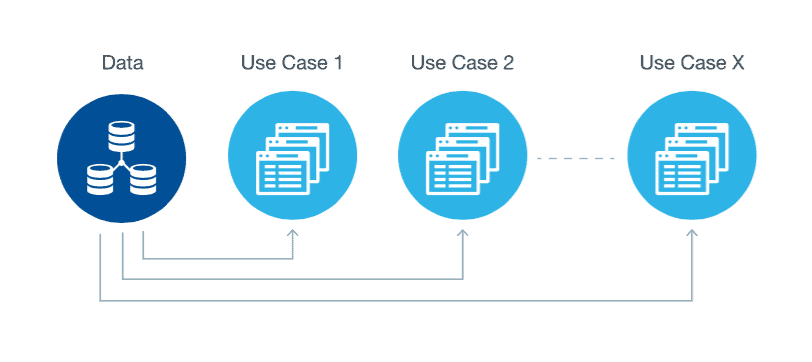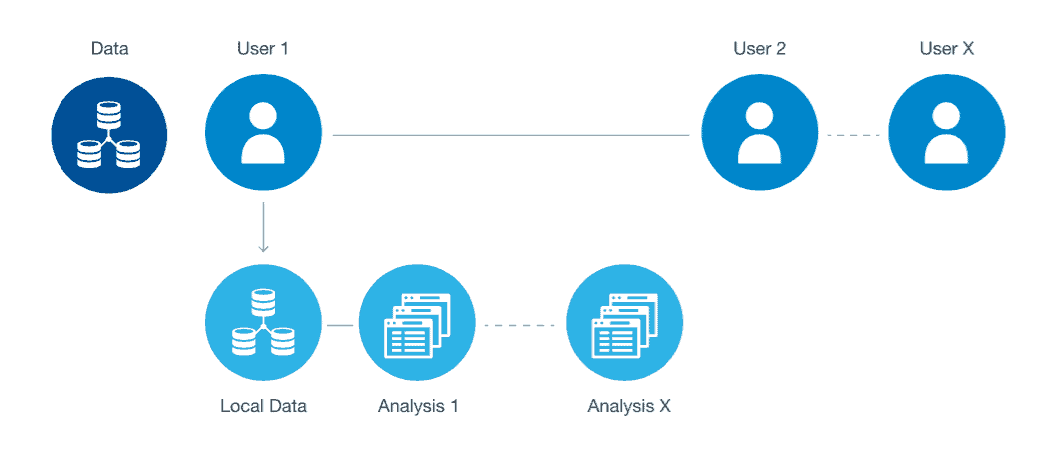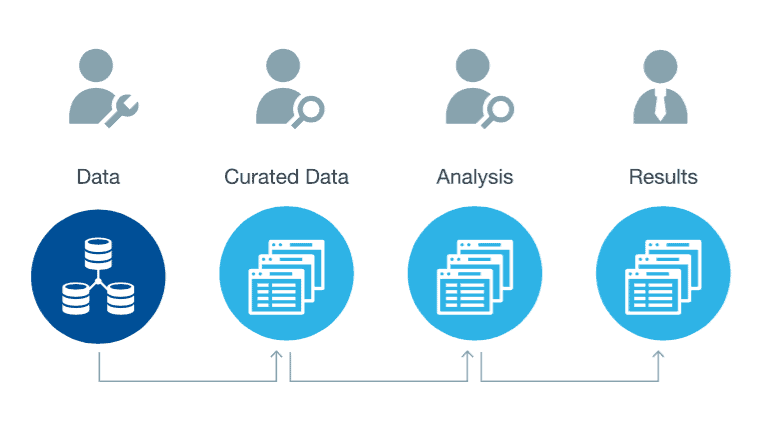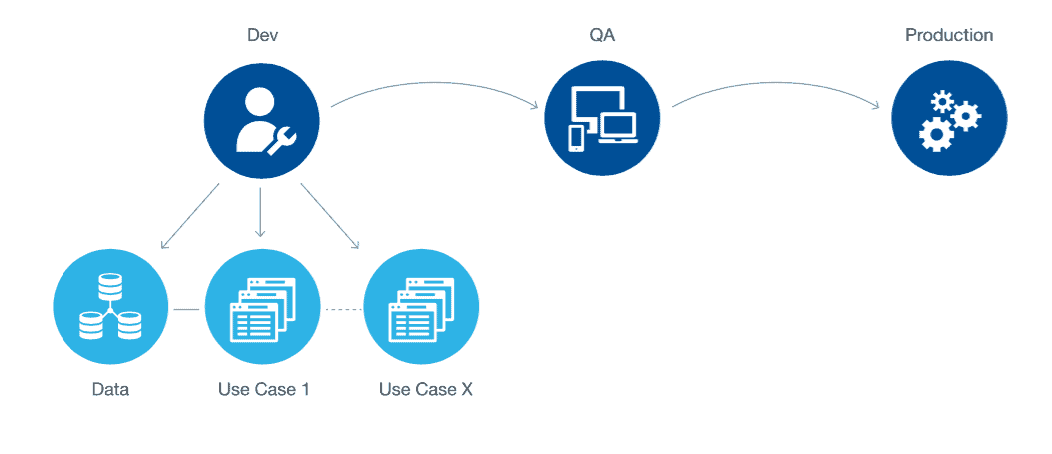Five Highly Effective Approaches to Governance
- Datameer, Inc.
- February 27, 2018

We see five major approaches to governance that vary in how data is organized, secured, shared, and operationalized. To choose which one would be best for your organization, think about your business, organization, and security models.
At the same time, as we walk through the governance models, keep two thoughts in mind:
- You can mix and match the approaches. For example, you could apply a model to one department that’s more independent and agile while applying another to a different department with specific compliance requirements.
- You can evolve from one model to another as you mature. You may start with a more independent, agile model and grow into a more focused model on operationalization.
Just be sure you’re using a big data analytics platform with the right combination of flexibility and controls. That will be essential to evolving your governance over the entire big data analytics journey.
1. Data-Centric Approach to Governance
The data-centric model is an easy model you can use early in your big data journey to facilitate ad hoc, team-based analytics. Here, your focus will be on managing and controlling access to your raw data to facilitate its proper use in analytics.
You’ll want to create a structure where all of your data is managed in one place, locked down and secured. Your data will be properly governed by data stewards, who will manage access and secure views.
Analytics and intermediate results can then be governed based on the specific analysis or use case’s needs.
2. User-Centric Approach to Governance
This is similar to the data-centric model above but differs in how the analytics are organized and governed. This is a model that’s better suited for ad hoc analytics driven by individual analysts or users.
Essentially, you’ll be separating your data more effectively.
For example, you might need to create multiple connections to the same data sets with different ingestion policies. Data stewards can create the right data sets for users by applying the correct policies. And from there, you can give individual users different levels of access and different freedoms to perform the analysis they need.
But as user counts go up, this can create administration headaches as well, so it’s best for smaller teams.
3. Reusability-Centric Approach to Governance
If you want to enable sharing data and artifacts in the system while driving agility, you should consider the reusability-centric model.
Organize your data in a way that boosts the ability of analytics to find and share analytic models and data sets with their teams. A typical organization is a raw data, curated data and models, analytic data and models, and results.
This model should facilitate teamwork and share while letting data stewards provide controls as needed.
4. Department-Centric Approach to Governance
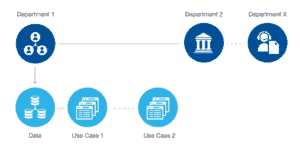
In this model, you’ll focus governance efforts on specific departments’ needs and potentially individual business processes within those departments.
You’ll need analyst teams dedicated to specific departments or business units so analytics can be logically segregated into those departments.
Within each of those departments, you can then organize data according to their specific needs. You can even apply any of the three earlier models within the departments.
The biggest advantage of this model is the ability to grow with the big data journey as more departments are brought on board.
5. Lifestyle-Centric Approach to Governance
The lifestyle-centric model’s organizational structure is basic and is based on development, QA, and production. In each of those sections, items are organized by use case or project.
As each set of items moves through the lifecycle and makes a major jump from one step to another (for example, from development to QA), the analytics are moved to an area representing that use case or project. Teams often track their progress based on the movement to folders representing the different steps.
This is the most complex model, but it helps facilitate speed for full analytic cycles and operationalization. And because the data has gone through a proper QA and operationalization phase, there is often more trust in the analytic results.
Other Governance Considerations
It would help if you thought most about your business, organization, and security needs as you’re selecting your governance model. But here are other considerations as you are defining and evolving your data governance strategy.
Scope: What’s the scope of your governance rollout and policies? To what extent will you manage policies? It’s important not to get ahead of yourself and try to “boil the ocean.” At the same time, keep the big picture in mind and think about your data governance needs in the future, as your organization’s data needs to grow and expand.
People: You’ll need to create a role for data stewards and foster this role within your organization. These will be the people who will aid your data democratization. Don’t forget to set policies with input from various teams to create an environment of deep trust.
Process: You started your big data journey to create greater agility in your analytics. Your governance should mirror this. Don’t get too bogged down in the process with your governance policies and programs.
Fit: In this article, we’ve looked at a good number of approaches and architectures. Take a good, hard look at your organization, data, analytics, and business teams before choosing. Don’t forget that you can mix and match these models to the needs of different departments or business units.
Next Steps
Choosing the right governance model isn’t an easy process. But good governance can help your organization become an agile, data-driven organization. You’ll inspire people to explore and contribute data and take another step in the right direction of creating a data-driven culture. Read our best practices for Data Governance.
